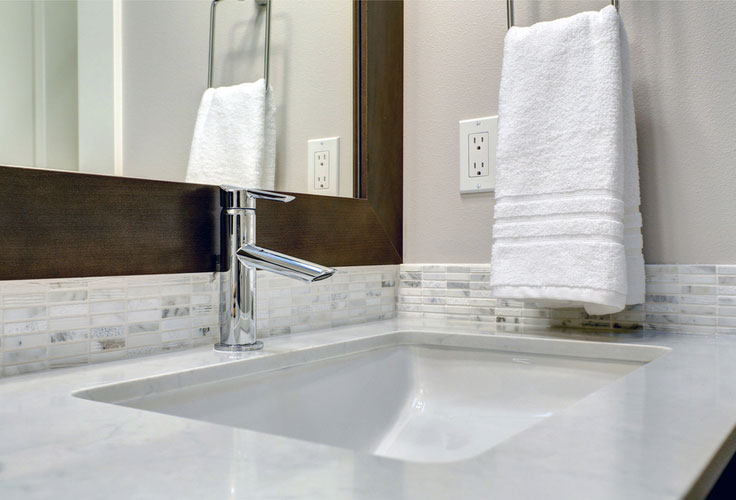Many homeowners ponder the question of whether it is safe and practical to place a microwave over a gas stove. The convenience and space-saving benefits of this arrangement are undeniable, but safety is of utmost concern when dealing with gas appliances. Let’s delve into this topic to understand the considerations, necessary precautions, and potential solutions.
Microwave Distance above Gas Stove
When installing a microwave above a gas stove, it’s essential to follow safety guidelines to ensure proper ventilation and minimize the risk of fire hazards. The National Fire Protection Association (NFPA) provides guidelines for the installation of microwave ovens over cooking appliances.
Clearance Requirements and Safety Considerations
First and foremost, it is essential to consider the clearance requirements for installing a microwave over a gas stove. The standard clearance recommended by most manufacturers and safety regulations is typically 18 inches between the stovetop and the bottom of the microwave. This distance helps prevent heat from the stove affecting the microwave and reduces the risk of fire hazards.
Manufacturer Certifications
It’s important to note that not all microwave models are designed for installation above gas stoves. However, there are specific Over-The-Range (OTR) microwave models that are certified by Underwriters Laboratories for use over gas ranges. Always check the manufacturer’s guidelines and product specifications to ensure compatibility and safety.
Installation and Ventilation
Proper installation and ventilation are crucial when placing a microwave over a gas stove. OTR microwaves are equipped with ventilation systems that help eliminate smoke, odors, and heat produced during cooking. It’s essential to follow the manufacturer’s instructions for installing and venting the microwave to ensure it functions effectively and reduces the risk of damage or malfunction caused by exposure to high temperatures or steam.
BTU Ratings and Heat Considerations
BTU (British Thermal Unit) ratings of gas stoves vary, and some high-BTU ranges can produce more heat during cooking. It’s vital to evaluate the specific BTU rating of your gas stove and compare it with the recommendations provided by microwave manufacturers. Higher BTU ranges may require additional precautions or may not be suitable for placing a microwave directly above them. Always consult with a qualified technician or the microwave manufacturer if you are unsure about compatibility.
Regular Maintenance and Safety Checks
Maintaining both the gas stove and the microwave is essential for safe and efficient operation. Regular cleaning and inspection of the stove, ensuring proper ventilation, and checking the condition of the microwave are crucial tasks to uphold safety standards in the kitchen. Additionally, checking for gas leaks and ensuring proper airflow around the microwave can help mitigate potential hazards.
Consider Microwave Shelf
If you’re concerned about the clearance distance, some installations use a microwave shelf or cabinet. This allows the microwave to be installed at a higher position, providing more clearance above the stove. Ensure that any shelf used is sturdy and properly installed.
Microwave Clearance above Gas Range
Always prioritize safety when installing appliances, especially in the kitchen where fire hazards are a concern. If you have any doubts or concerns, it’s recommended to consult with a professional installer or contact the manufacturer for guidance. Additionally, local building codes and regulations should be followed to ensure compliance and safety.
Frequently Asked Questions Of Can You Put A Microwave Over A Gas Stove
How Far Does A Microwave Have To Be Above A Gas Stove?
The microwave should be at least 18 inches above a gas stove for safety reasons.
Can You Put A Microwave On Top Of A Gas Range?
Yes, you can put a microwave on top of a gas range. All over-the-range microwaves are certified for use over a gas range. Be sure to maintain the recommended distance of 18 inches.
What Is The Clearance for Microwave Over Gas Stove?
The recommended clearance for a microwave over a gas range is 18 inches.
Can Microwave Be Placed Near Gas Stove?
Placing a microwave near a gas stove is safe if both appliances are functioning properly. Ensure the microwave and its cord are kept away from the stove’s hot surfaces. Follow the manufacturer’s guidelines for specific installation requirements.
Can A Microwave Be Placed Above A Gas Stove?
Yes, as long as the microwave meets the proper clearance requirements.
Conclusion
Placing a microwave over a gas stove can be safe and practical if done following the manufacturer’s guidelines, adhering to safety clearances, and considering the specific characteristics of both appliances. Always prioritize safety and consult with professionals when in doubt about the compatibility and installation requirements. With the right precautions and considerations, the combination of a gas stove and an over-range microwave can enhance the functionality and aesthetics of your kitchen.
It’s essential to remember that safety is paramount and guidelines must be followed for a successful installation. By understanding the considerations involved and ensuring compliance with safety regulations, homeowners can enjoy the convenience of having a microwave over a gas stove without compromising on safety.
Can a Convection Oven Replace a Microwave? Discover the Truth
Can a Plastic Bag Go in the Microwave? Find Out the Safe Way!



Leave a Reply